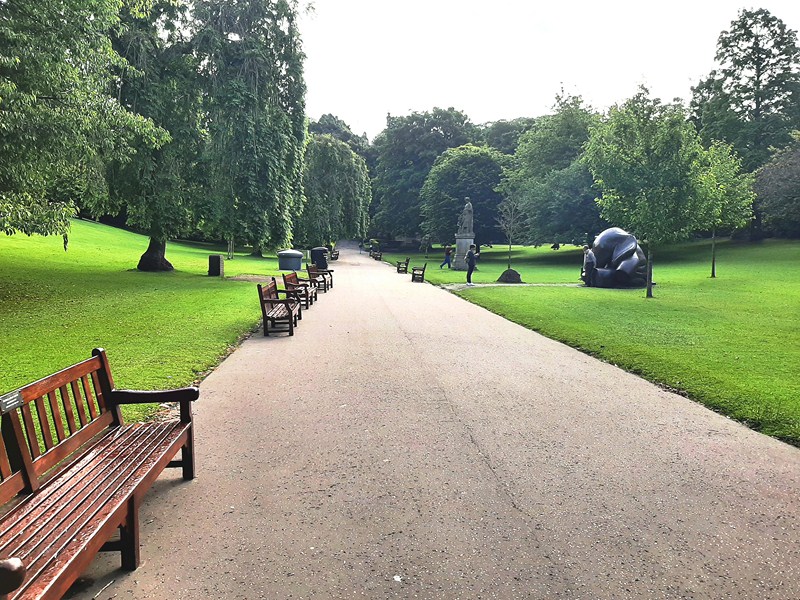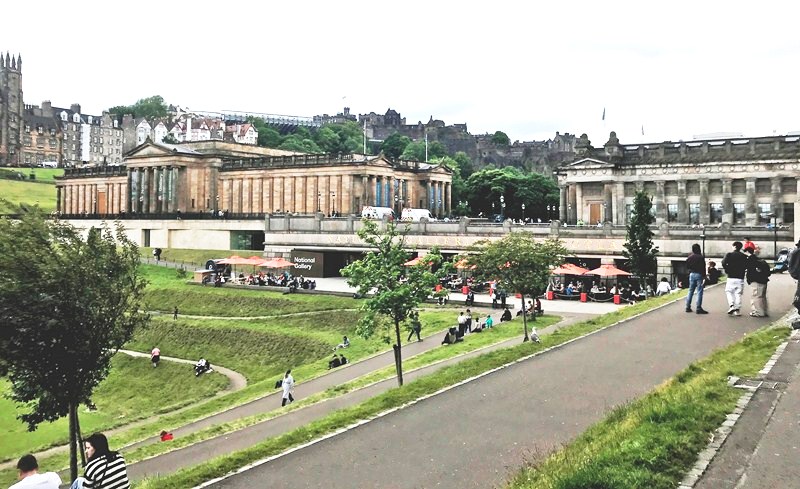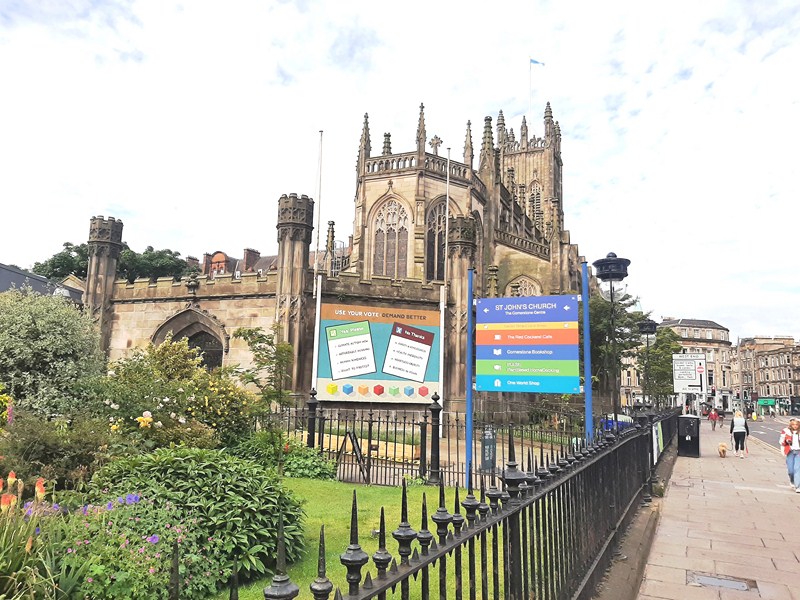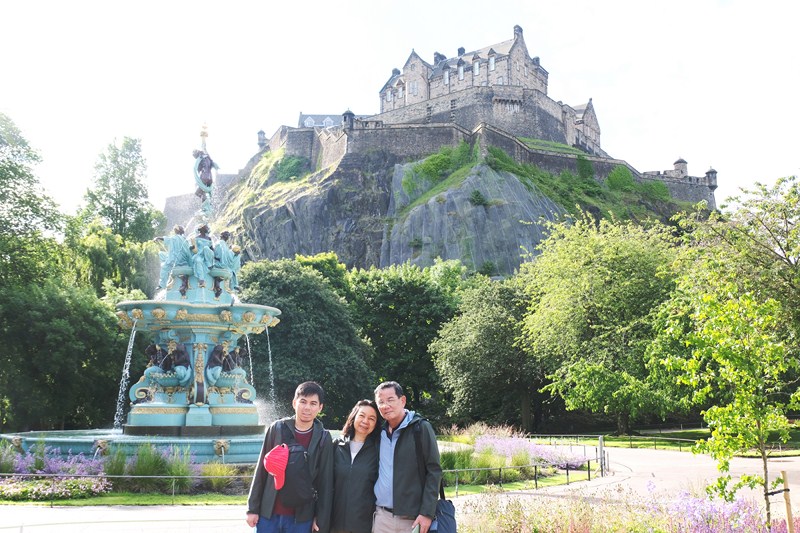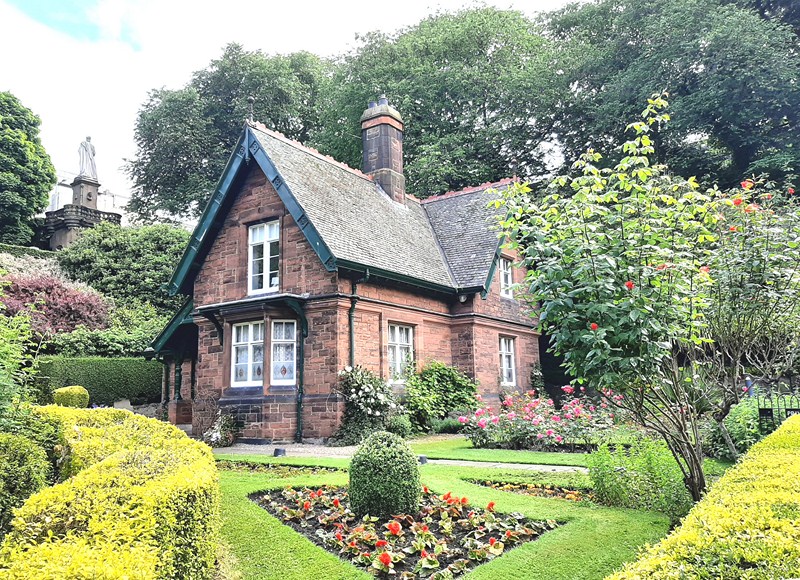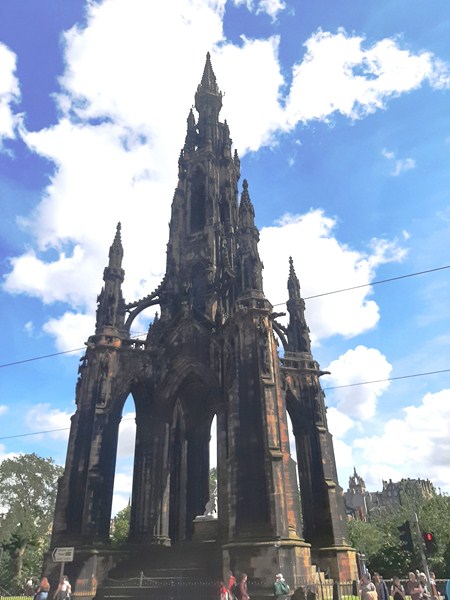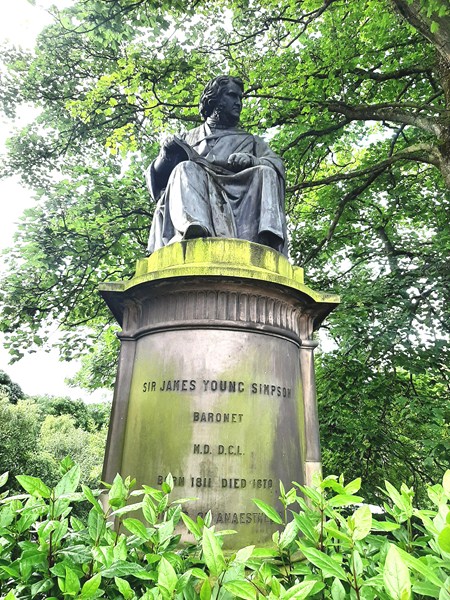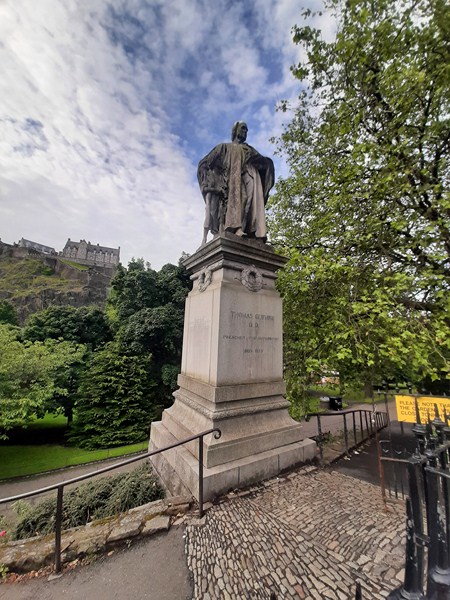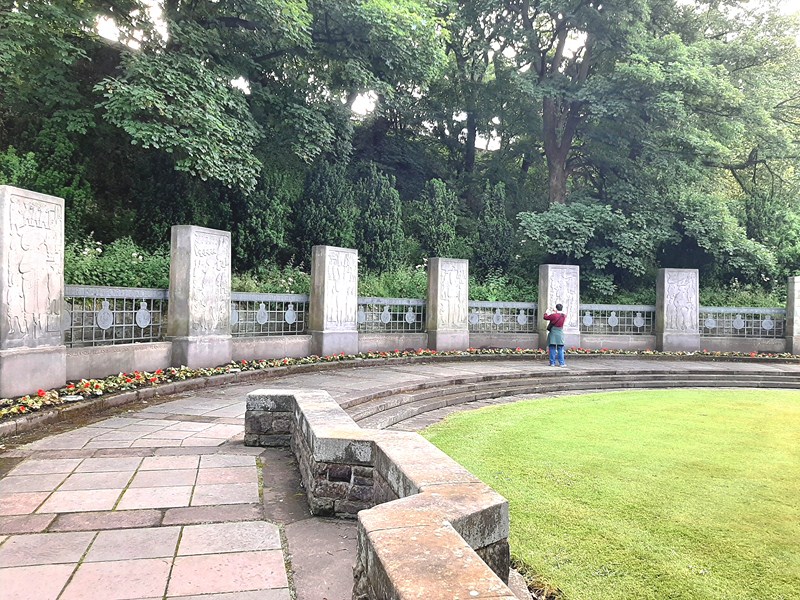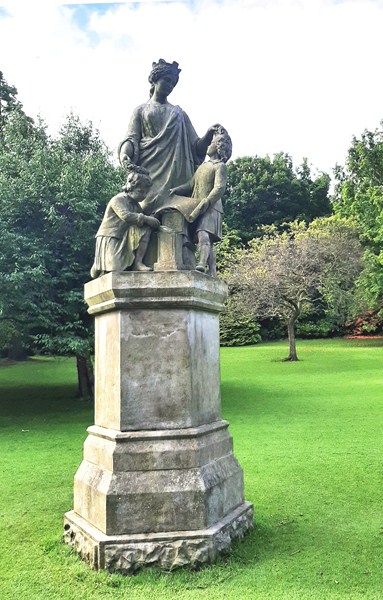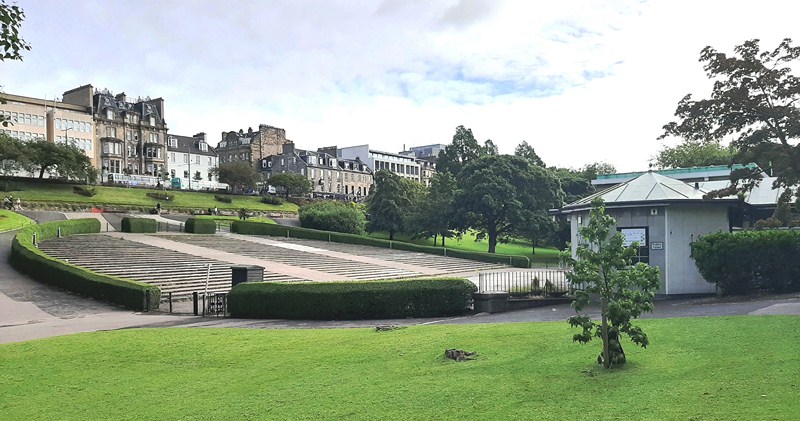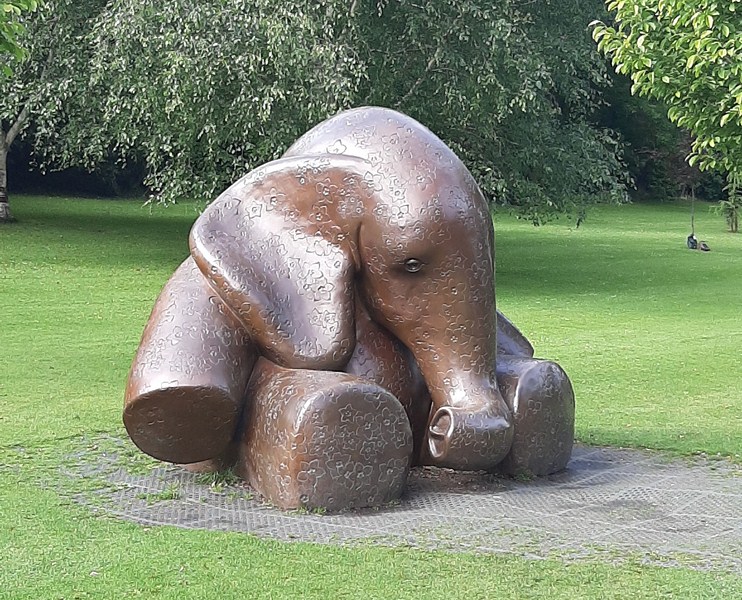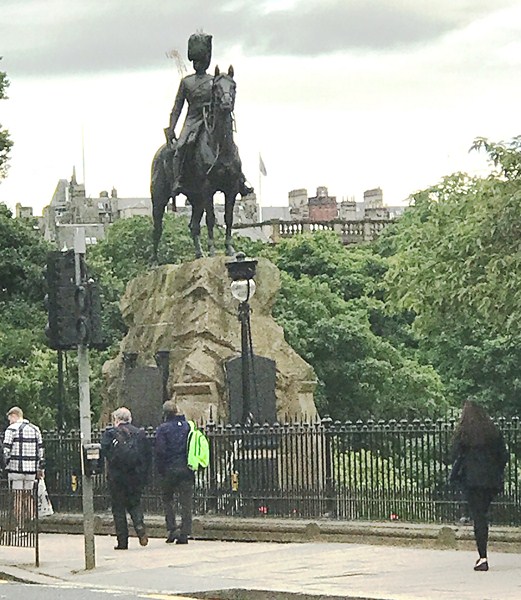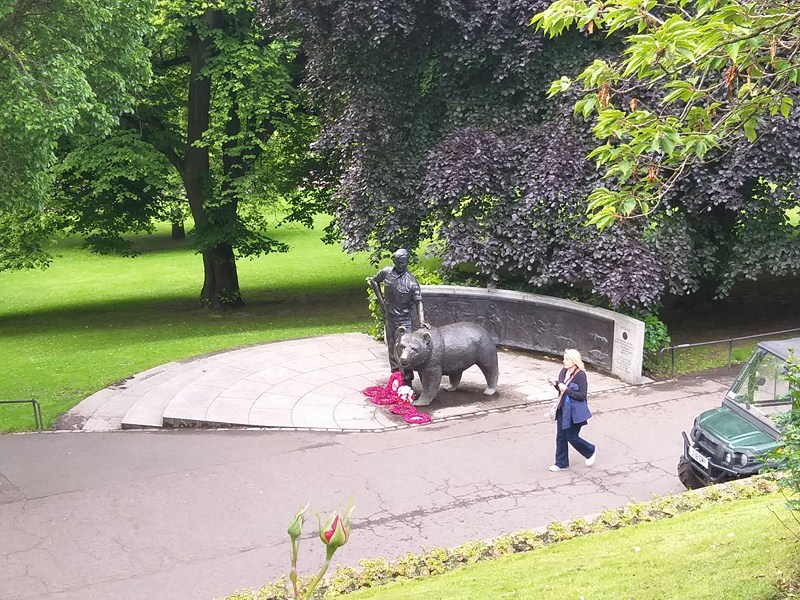Our third (and first and only whole) day in Edinburgh, we planned to visit Edinburgh Castle but, as it was still very early in the morning (the castle opens at 10 AM), we decided to visit and explore the 150,000 sq. m. (37-acre) Princes Street Gardens, one of two adjacent public parks (East Princes Street Gardens and West Princes Street Gardens) and one of the most important urban parks in the center of Edinburgh.
Lying in the shadow of Edinburgh Castle (on its rock towering above the western end), the gardens, running along the south side of Princes Street, is divided into two parts by The Mound, an artificial hill, on which the National Gallery of Scotland and the Royal Scottish Academy buildings are located, that connects the city’s New Town and Old Town.
Check out “National Gallery of Scotland”
Lying at center of Edinburgh’s World Heritage Site, set in the valley between New Town and Old Town Outstanding Conservation Areas (the boundary between the two areas being the north fence of the railway), the Princes Street Gardens is in the very center of Edinburgh’s World Heritage Site.
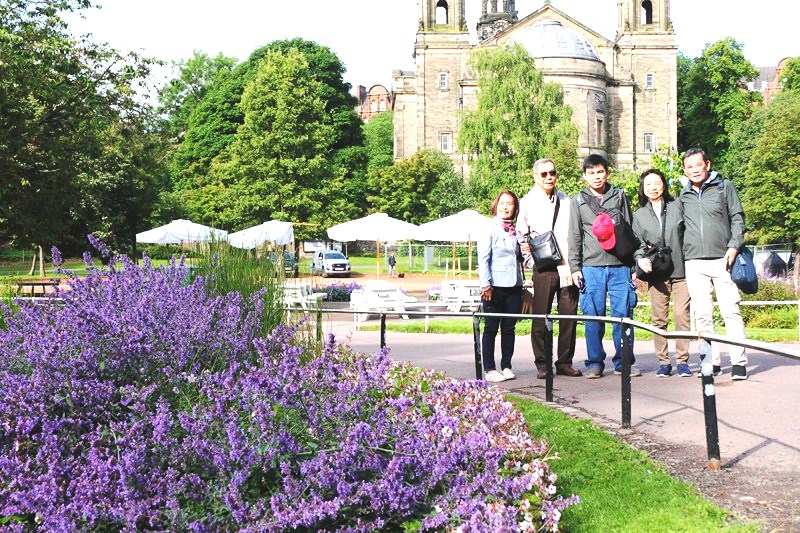
L-R: Paula, Manny, Jandy, Grace and the author at Princes Street Gardens. In the background is St. Cuthbert’s Parish Church
Its landscape, of outstanding refinement and cultural significance, has high geological and some botanical scientific interest. One of the New Town Gardens listed in the Inventory of Gardens and Designed Landscape in Scotland, it was assessed as outstanding in terms of aesthetic, historical, architectural and scenic values.
The central location of the Gardens makes it a popular choice having the highest awareness and visitor figures for both residents and visitors to the city. Awarded a Green Flag since 2011, the park is beautiful all year round.
East Princes Street Gardens run from The Mound to Waverley Bridge, and cover 3.4 ha. (8.5 acres) while the larger West Princes Street Gardens covers 12 ha. (29 acres) and extends to the adjacent churches of St. John’s and St. Cuthbert’s, near Lothian Road in the west.
Check out “St. Cuthbert Parish Church”
The Gardens were created in the 1820s following the long draining of the Nor Loch and building of the New Town, beginning in the 1760s. Situated on the north side of the town, the loch, originally an artificial creation forming part of its medieval defenses, has made expansion northwards difficult and its water was habitually polluted from sewage draining downhill from the Old Town. The Princes Street Gardens has a diverse and fascinating collection of public monuments and memorials. Dating mainly from the 1840s to 1990s, there are three types.
The first group commemorates influential Scottish men of the 18th and 19th centuries. In the East Princes Street Gardens are the Scott Monument (the most prominent in the garden, this Neo-Gothic spire was built in 1844 to honor Sir Walter Scott) and the statue of explorer David Livingstone. Also within East Princes Street Gardens are statues of the publisher Lord Provost Adam Black and Professor John Wilson (the essayist who wrote under the pseudonym Christopher North).
The second group remembers those who have died fighting in wars, including the Royal Scots Greys Regimental Memorial and the Scottish American War Memorial (designed by R. Tait McKensie, it was erected in 1927). The Royal Scots Monument, a large curved monument to the Royal Scots, stands slightly hidden just south of the very picturesque gardener’s cottage at the east end of the West Princes Gardens. Designed by Sir Frank Mears, with sculpture by Pilkington Jackson, it was described as a “modern henge.” Dating from 1950, it was added to and “finalized” in May 2007 following the termination of the Royal Scots in 2006. This added additional Battle Honors gained since the 1950s.
The third group includes miscellaneous sculptures and monuments such as the cast iron Ross Fountain The focus of the western end of the gardens, the newly refurbished fountain is the park’s most important monument. Gifted by Edinburgh gunsmith Daniel Ross, this structure was originally installed in 1872, after having been an exhibit at the Great Exposition of 1862 in London, and repaired, restored and unveiled on July 8, 2018 with the help of The Ross Development Trust.
Check out “Ross Fountain”
At the eastern entrance to the Gardens is the world renowned Floral Clock. The world’s first floral clock, it was first planted in 1903 and each year the planting scheme, designed by the Technical team in the Parks and Greenspace Service, commemorates a special anniversary. The designs of the colorful displays uses a variety of 30,000 flower and foliage plants (including annuals such as Lobelia, Pyrethrum and Golden Moss and succulents such as Echeveria and Sedum), all of a dwarf nature, suitable for carpet bedding.
Along the south side of Princes Street are many statues and monuments such as statues of the poet Allan Ramsay, the church reformer Thomas Guthrie, and the obstetric pioneer James Young Simpson. Within East Princes Street Gardens is a small commemorative stone honoring the volunteers from the Lothians and Fife who fought in the Spanish Civil War.
In the center of the West Princes Street Gardens is the Ross Bandstand, named after William Henry Ross (Chairman of the Distillers Company Ltd.) who, in 1877, gifted the first bandstand on the site. The Princes Street proprietors contributed £500 as a goodwill gesture to the cost of the bandstand. The present building and terraces, dating from 1935, is the site of various concerts and other events including the Festival Fireworks Concert, Men’s Health Survival of the Fittest and during the city’s Hogmanay celebrations. The Ross Development Trust proposed to rebuild the bandstand as a Ross Pavilion based on design by architects wHY following an international competition in 2017.
The Genius of Architecture, a statuary group on the lower path, represents crowning the Theory and Practice of Art. Designed by William Brodie originally for the garden of Rockville, the home of his maverick architect son-in-law Sir James Gowans, it was moved here in the 1960s following the demolition of Rockville. Nearby is the Mortonhall Baby Ashes Memorial, a new monument in the form of a baby elephant by sculptor Andy Scott. Added to the gardens on February 2, 2019, it is a permanent reminder of the 250 babies and their families affected by the Mortonhall scandal, which was uncovered in 2012.
Other statues and memorials include the Norwegian Brigade War Memorial (donated in 1978 by Norwegian veterans trained in Scotland during the Second World War) and the bronze statue, unveiled in 2015, of Wojtek the Bear, a Syrian brown bear adopted by the Polish II Corps during World War II, with a fellow Polish Army soldier walking together.
Princes Street Gardens: Princes Street EH2 2HG, Edinburgh. Tel: 0131 529 7921. E-mail: parks@edinburgh.gov.uk

